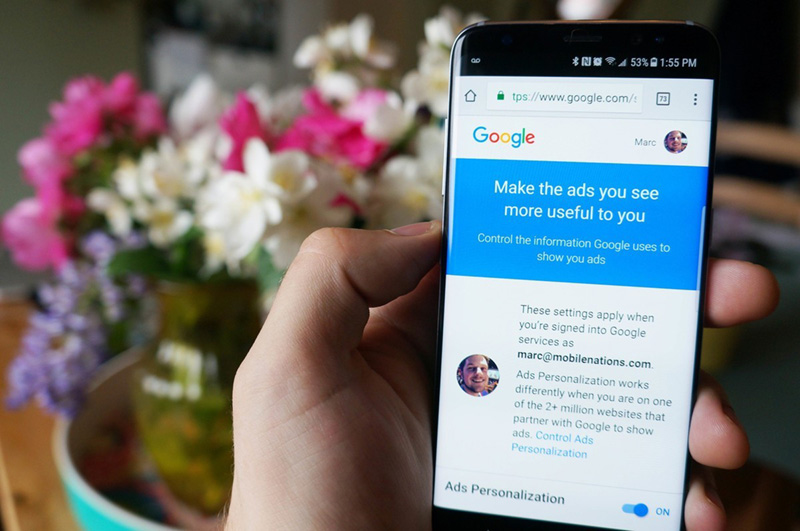The problem: Ads overdose. Banner blindness. A deluge of intrusive formats, high-profile data breaches, and low perception of value have all contributed to increased consumer backlash towards all manner of ads.
The solution: Unknown as of yet. But, there are leads.
The promise: The future will deliver all the data in the world. Machine learning to interpret that data in unimaginable ways. Tracking mechanisms that seem to come out of science fiction novels. And even more important than all of that, new ideas. New approaches. New ways to crack the case.
One giant leap into the future
The rise of content marketing is a direct consequence of advertising fatigue. The Internet reached ad-saturation, and people learned to ignore them. The public barely perceives most ads. Thus brands realised that they had to provide value to get costumers to listen. Content marketing implies a soft-sell approach. Letting your prospective clients know you’re there for them by presenting them with the information they need. And waiting for your new friends to come to you.
It’s a valid way to approach the situation, and it actually works, but it doesn’t solve the already stated problems. And brands need marketing. Their products need exposure. Their services need to earn a place in their client’s minds. The landscape calls for innovation, for a new approach, for marketing to step into the future. And said future holds as many promises as challenges. For example, Voluum paints an exciting picture of things to come:
“Different storytelling methods often come in hand with another trend that we can observe: personalization. No more ‘one-size-fits-all’ ad campaigns with big budgets that try to talk to everybody in the same way. This will be possible by employing technology (AI to be more specific), not people. Personalization won’t be achieved without measurability. This is an old problem in a new disguise. It’s not about clicks and conversions anymore. How about measuring an emotional response? Eye focus? Heart rate? The tech of tomorrow will gather all sorts of data.”
But, beyond all that, advertisers have to focus on what’s important: their clients.
First, win their hearts.
This principle has always been at the…heart of advertising and marketing. Still, we tend to forget it. And since the Internet finally provided a way to measure a campaign’s success, we binged on conversion rates, CTR, and ROI. We will have even more data in the future, but the customer should be #1 in our minds. As Forbes puts it:
“For all the talk of technology in the future, a big push in 2020 will be for thoughtfulness. Customers want to build relationships and emotional connections and will respond to brands that show interest in them and their feelings and then follow that up with a consistent, technology-driven experience.”
Your prospective clients want a relationship with your brand; that’s the headline here. But, they might go another way if your competition promises to listen to them and you don’t. If they resonate emotionally with what the others are selling, there’s no amount of data that will help you retain that client. Your customer needs to be at the centre of your strategy. Ad-Juster says it best:
“We’ll be seeing a steadily increasing trend toward whole ad campaigns being built around the user experience. Achieve the right contextual relevance, and you’ll enhance brand engagement without disaffecting the consumer.”
Ads adopt new shapes.
With contextual advertising or “native ads”, we go back to the idea at the centre of content marketing. An idea proposed by Bill Gates in the previous century: Content is king. It just is, content is the fuel that moves the Internet. But how does this relate to ads? Businesses will be increasingly adopting native advertising and will achieve impact through its direct association with valued content. It’s an idea as old as the media, and its time has come once again.
Contextual advertising takes content marketing to the next level, by pairing said content with ads made especially for it. Another variation of the same concept would be to let technology find a match for your ad among the best content the Internet has to offer. “Is the Viral Non-Ad Ad the Future of Advertising?” the New York Times spotted another ad shape that will probably be ever-present in the years to come. Enter the branded narrative ads:
“The more remarkable aspect of so many viral ads today is how brazenly they defer, as long and as fully as possible, the realization that you’re watching an ad at all. A proven way to rack up clicks and other online “engagement” is to instil in viewers an itching curiosity (…) Branded-narrative ads are a high-sheen version of this strategy, compelling us to watch all the way through even if for no other reason than to figure out what it is we’re actually looking at.”
https://twitter.com/davidmackau/status/1193987805984231425?s=20
The New York Times doesn’t seem to see a future in those ads, the article ends with: “What we’re left with is a strange paradox: a commercial that feels both deeply insidious and laughably ineffectual at the same time, a bid for sales that may wind up garnering only clicks.” That take might prove shortsighted, though. Voluum sees the aim of those ads differently, one that ties everything up with the “First, win their hearts” section:
“The main buzzword of today is ‘storitization‘. This clunky word means that every ad experience will have a narrative, with its own pace and plot points attached to it. Advertisers no longer want you to remember the technical specs of their products. They want you to feel specific emotions when you think or interact with their product. This brings you closer to the brand.”
Now, where will these ads even be served? Is the Internet going to limit itself to mobile phones and computers?
The war is just beginning.
The future will probably open new battlefields, but the present gives us it is hard to determine which ones from a limited perspective. Will the Internet of Things provide new screens for brands to be present in? Is Virtual Reality ready for primetime? Will Augmented Reality reach the mainstream? Is voice-search really the new frontier or are smart assistants just a fad? What will be the next behemoth to be totally replaced by the new kid on the block?
According to Martechadvisor chips, “Adopting an omnichannel approach, advertisers are now not only present across touchpoints such as smartphones, computers, digital assistants, TVs, and tablets or wherever the users are but in a unified fashion which conveys to the customers a single meaningful brand story (…) The cost model of tomorrow is not click-centric but user-centric. The future tracking platforms will allow you to map the entire history of users’ interactions, get data on all the touchpoints and adjust your messaging accordingly.”
Having a golden age in our sight will make the giant leap into the future that much easier.
—
Eduardo Próspero. Content developer and author.









